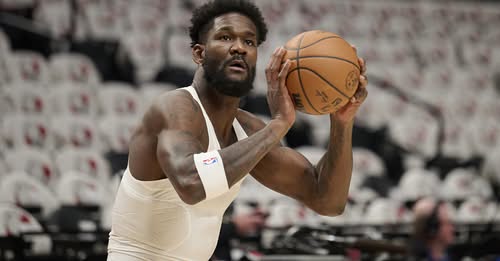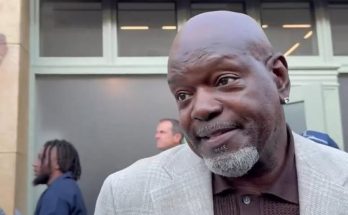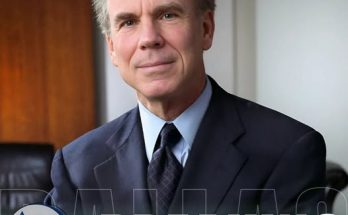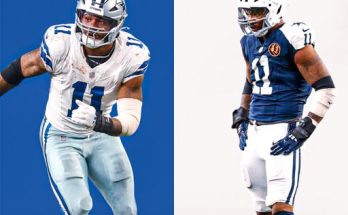The Los Angeles Lakers, a franchise synonymous with bold moves, blockbuster trades, and headline-grabbing transactions, find themselves in the middle of an unexpected storyline this offseason. According to a rival NBA executive, the team has been unusually quiet on the trade front, a stark contrast to their typical approach when looking to reshape or reinforce the roster. This revelation is causing ripples across the league, with analysts, fans, and insiders alike speculating about what it could mean for the team’s short-term competitiveness and long-term vision. For years, the Lakers have prided themselves on being proactive—whether it’s trading for Anthony Davis, pursuing superstars like Kawhi Leonard, or making smaller, savvy acquisitions to build depth around their stars. Yet, this offseason’s muted activity is leaving many to wonder if the Lakers are purposefully holding their cards close to their chest or if they simply lack the assets and opportunities to make a splash.
The observation from this rival executive suggests that Los Angeles has been keeping an unusually low profile in trade discussions compared to other Western Conference contenders. While teams like the Phoenix Suns, Golden State Warriors, and even the Dallas Mavericks have been aggressive in exploring upgrades, the Lakers have not been mentioned in the same breath when it comes to active trade negotiations. This is particularly intriguing given the team’s current state: they have a generational star in LeBron James who, despite his age, remains one of the most impactful players in the game, alongside Luka Dončić, who is widely expected to be the centerpiece of their future. The combination of those two alone would suggest an urgency to maximize every season, and yet, there appears to be a deliberate pause on pulling the trigger on significant moves.
Part of the explanation might lie in the Lakers’ asset situation. After years of dealing draft picks to acquire star power, the team is limited in future picks they can trade under the Stepien Rule, which restricts trading first-rounders in consecutive years. They also have a roster with a mix of promising young pieces and solid veterans, but not necessarily the kind of high-value trade chips that could easily net another All-Star-level player. Names like Austin Reaves, Rui Hachimura, and Jarred Vanderbilt hold value, but the Lakers appear reluctant to part with their core role players unless the return is undeniable. This restraint could be both a sign of front-office patience and a recognition that overpaying for the wrong fit could be disastrous in a Western Conference where the margin for error is razor-thin.
Another factor in the Lakers’ measured approach could be their evaluation of the current trade market itself. The post-free agency landscape is often a time when asking prices for available players are inflated. Teams looking to sell are often holding out for desperate buyers, and Los Angeles might simply not be in a position where they feel pressured to meet those demands. With the trade deadline months away, there’s a chance the front office believes patience will yield better opportunities later in the season. Historically, the Lakers have pulled off impactful in-season trades, such as the 2023 midseason overhaul that helped them make a deep playoff run. Waiting for the right moment may align better with their long-term competitiveness than jumping into overvalued deals in August.
There’s also the possibility that the Lakers’ quietness isn’t a lack of activity but rather a sign of improved operational secrecy. Under Rob Pelinka’s leadership, the front office has been known to operate with a tight inner circle, avoiding leaks until deals are finalized. This method, while frustrating for fans craving rumors and speculation, prevents negotiations from being undermined by public perception or other teams swooping in at the last second. If this is the case, the rival executive’s comments might simply reflect the lack of visible chatter rather than a complete absence of behind-the-scenes maneuvering.
For the fan base, however, silence is a double-edged sword. On one hand, it signals that the Lakers might be exercising discipline rather than making knee-jerk moves that could harm their flexibility. On the other hand, the Western Conference is not forgiving, and teams that stand still while others improve often find themselves sliding down the standings. With franchises like the Minnesota Timberwolves, Oklahoma City Thunder, and Sacramento Kings all building momentum, a lack of decisive action could make the difference between hosting a playoff series and entering the postseason as a lower seed. In a league increasingly defined by star duos and depth, the Lakers cannot afford to squander seasons where LeBron James is still capable of producing at an elite level.
The chemistry and continuity of the Lakers’ current roster might also be influencing the front office’s thinking. The team saw stretches of success last season when the core players were healthy, and there’s an argument to be made that simply running it back with minor tweaks could yield better results than a major roster shakeup. Players like Reaves and Hachimura showed they could be valuable playoff contributors, while Vanderbilt’s defensive versatility offers balance to a star-heavy lineup. The presence of Luka Dončić as the emerging face of the franchise also changes the calculus—building a team around him is a long-term project, and rushing into a win-now trade that doesn’t align with that vision could be counterproductive.
Still, it’s hard to ignore the reality that the Lakers’ window with LeBron will not last forever. Even as Dončić represents the future, the front office must weigh how much they are willing to invest in maximizing the present without jeopardizing the next decade. This balancing act is one of the most challenging in sports management: the temptation to push all chips in for a championship run versus the prudence of ensuring sustainable success. For the Lakers, the decision is even more complex given the expectations that come with their brand and the pressure from a fan base that measures success only in banners.
The rival executive’s comments may also have been strategic—teams often speak to the media with the intention of shaping narratives or applying subtle pressure. By labeling the Lakers as inactive, it’s possible this executive was hinting at an opportunity for other teams to approach Los Angeles with trade offers, perhaps hoping to spark negotiations. In the chess game that is NBA roster building, public perception can sometimes push teams toward action, even if their original plan was to remain patient.
Looking ahead, the Lakers’ lack of visible trade activity could quickly change. The NBA’s landscape is unpredictable, and one star becoming disgruntled or one team deciding to pivot toward a rebuild could open doors that were closed just weeks ago. If such an opportunity arises, the Lakers have shown they are willing to act decisively. Until then, their measured approach could simply be a reflection of timing—waiting for the market to settle, for the right player to become available, and for internal evaluations to solidify.
The coming months will reveal whether this quietness was strategic brilliance or a missed chance to strengthen the roster. For now, the Lakers find themselves in the rare position of being the subject of speculation not for who they are acquiring, but for their lack of movement. In the NBA, that silence can be deafening, but it can also be the calm before a storm. If history is any guide, the Lakers have rarely stayed quiet for long, and the rival executive’s words might soon be outdated if the right deal presents itself. Until then, fans and analysts will continue to read between the lines, wondering whether the Lakers are plotting something big behind closed doors or simply content to bet on the team they already have.



